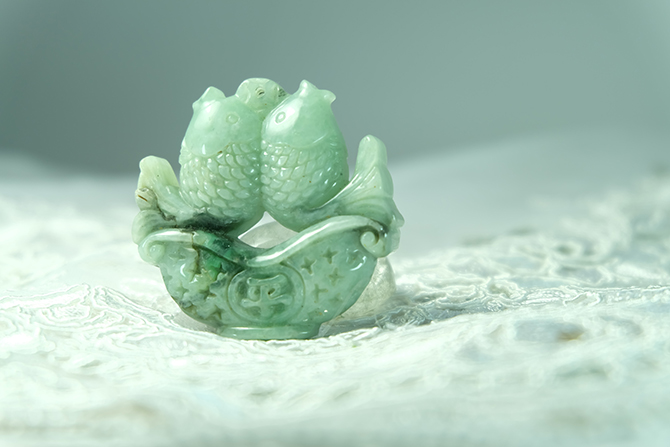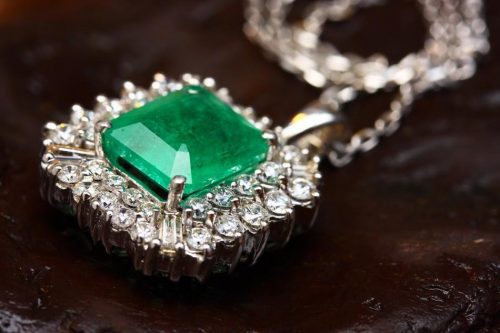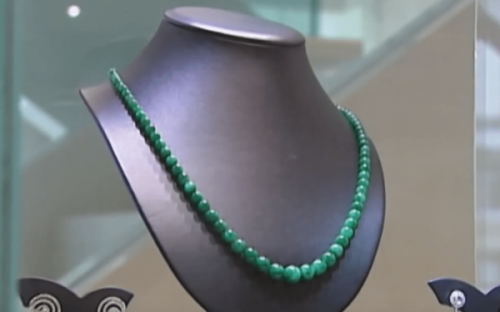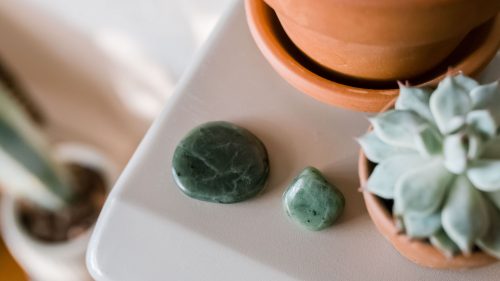
Jade and What You Should Know About Cabochons, Chlorine
Jade is a very unique and distinct looking gemstone that has been prized since ancient times. Master craftsmen across centuries and cultures have fashioned a swath of objects from the in-demand stone, including jade jewelry, plaques, sculptures, and even vessels. Today, these valuable artifacts can be found in museums and illustrious collections the world over.
The demand for jade gemstones and jewelry is on the rise. If you plan on buying jade either as an investment or solely out of interest in jewelry, you should know that there are three important things that determine the value of jade — color, cabochons, and maintenance.

Evaluating color and translucency
The quality of a jade stone’s color is judged by taking into account three components — its hue, saturation, and tone. The finest quality jade is considered to be a vibrant, emerald green color. Known as “imperial jade,” such stones can easily command millions on the market. These gems should not contain even the slightest gray or brown modifiers. With regard to saturation, the color must appear intense even from a distance. The preferred tone for jade is medium, meaning that it should not be too dark or light. Plus, the color distribution must be perfect, without any spotting or veins on the stone.
Jade’s translucency ranges from transparent to opaque. “The best jadeite is semi-transparent, meaning the text you can read through it would be slightly blurred. Because light penetrates below the surface, semi-transparent jadeite has an alluring brilliance. It almost appears to glow, increasing the charm of a lush green or rich lavender hue. The least desirable jadeites are completely opaque or have opaque or cloudy patches that break up their transparency,” according to GIA.
Cabochons
The finest quality jade is typically cut as cabochons, which means that it is shaped and polished rather than keeping it faceted. The premium standard used for jade is 14×10 mm. At present, double cabochons are considered the best for top-grade stones, since the convex bottom ends up intensifying the color of jade. Hollow cabochons are the least-valued.
Important factors to consider when judging cabochons “are the contour of the dome, the symmetry and proportions of the cabochon, and its thickness. Cabochon domes should be smoothly curved, not too high or too flat, and should have no irregular flat spots. Proportions should be well balanced, not too narrow or wide, with a pleasing length-to-width ratio… The best-cut cabochons have no flaws or unevenness of color that is visible to the unaided eye,” according to Louts Gemology.
Caring for jade

The value of jade can only be maintained if the jade receives proper care. You should only use water mixed with mild soap to clean jade. Avoid household detergents or jewelry cleaners that contain harsh chemicals. Use soft cotton pads to gently wipe the surface of the jade to avoid scratching. Never put the stone in water. You should also avoid using steam cleaners or ultrasonic jewelry cleaners.
“When wearing jade, be careful not to hit the stone as it may easily crack or chip. Chlorine, which is often added to water in pools and to tap water, can be harmful to jade, so make sure you take off your jade jewelry before you swim or take a shower. It’s best to avoid contact of jade with makeup, perfume, hair spray, and other chemicals that may have an adverse effect on the stone’s surface,” according to Jewelry Notes.
As far as storage is concerned, keep jade separate from other gemstones as it can get easily scratched. If you have no choice but to put it with other stones, be sure to wrap the jade in a soft cloth. If unfortunately it gets damaged, you can still sell the jade for some value provided it has recut potential.
Jade Color
Jadeite is most prized in its pure green variety, but can be found in many colors ranging from red, pink, black, brown, white, and even violet with variations of colors overlapping one another. In contrast, nephrite’s color scale is more limited, with the most commonly found colors being green to grey-green stones, white to yellowish stones, and yellow to reddish stones.
The unique properties of jade have fueled the centuries-long fascination with the stone. Incredible toughness, coupled with a relatively lower hardness grade, allows the stone to be carved into magnificent jade jewelry and objets d’art. This, together with the alluring “greasy” luster and incredible variety of color not found in other gems, has made the study of jade a world unto itself. The depth of color is enhanced by jade’s characteristic opacity, which becomes translucent only when carved very thin.
The Symbolism and Meanings of Jade

Jade has been valued by civilizations around the globe since ancient times. The ancient Mayans and Aztecs believed that jade could alleviate pain, especially in the side of the body.
In China, jade is believed to be a symbol of prosperity, wealth, purity and beauty. The Chinese also believe that jade possesses healing qualities and can protect the wearer from illnesses by absorbing any negative energy.
Jade symbolizes love, healing and courage. It is believed to enhance wisdom and promote balance. Jade is also believed to foster peace and harmony.
Jade Properties
The healing properties of jade have been hailed throughout history. This unique stone is often credited for alleviating anything from nightmares to kidney stones. Remarkably enough, the kidney-healing quality of this stone has crossed cultures from Mexico to the Far East. Stones carved for this purpose would be placed over the flank of a patient, and relief was soon to follow. This led to the naming of the jade mineral known as nephrite (from the Greek “nephros,” or kidney) and lapis nephrictus (in Latin, “stone of the loin”).
How to Purchase Jade
As with any luxury item, the main determinant of value to you will be how much you love the piece. When buying jade, however, consider not only the color and size of stones, but also the artistry in carving that may elevate a piece beyond the value of its color. Modern jade jewelry and objets d’art are diverse in their appeal and their intricacy. Historical pieces of jade will have tremendous value determined by the provenance that is available, as well as the quality of the color and the carving.
Source:
https://visiontimes.com/2019/11/01/cabochons-chlorine-and-other-things-you-need-to-know-about-jade2
https://www.invaluable.com/blog/what-you-should-know-about-jade/
https://www.jewelryshoppingguide.com/a-complete-buying-guide-on-jade/




